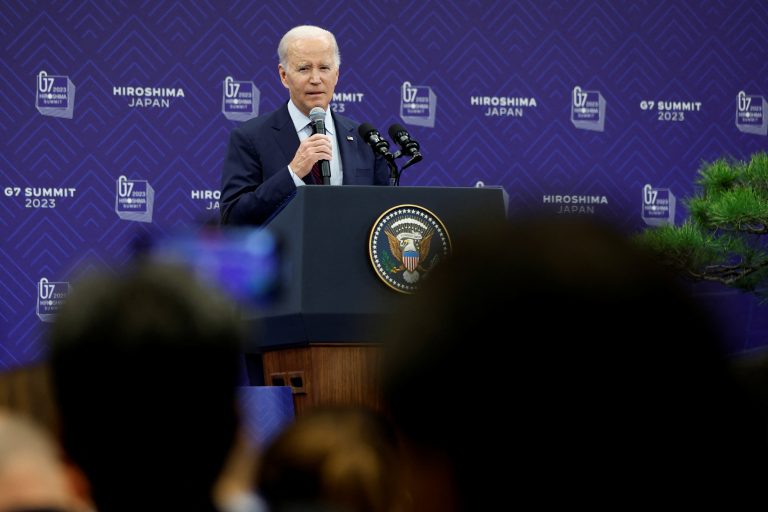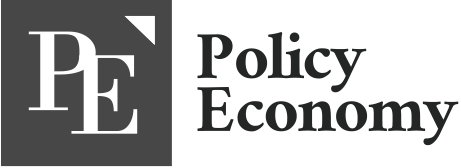[동아시아포럼] 새 국면 맞이한 美·中관계, 신뢰와 균형 모색해야
바이든 대통령, 중국과의 관계 개선 시사 갈등, 규제 일관하던 양국관계 변화 예고 11월 양국 정상 간 만남에서 성과 있을 것
[동아시아포럼]은 EAST ASIA FORUM에서 전하는 동아시아 정책 동향을 담았습니다. EAST ASIA FORUM은 오스트레일리아 국립대학교(Australia National University) 크로퍼드 공공정책대학(Crawford School of Public Policy) 산하의 공공정책과 관련된 정치, 경제, 비즈니스, 법률, 안보, 국제관계에 대한 연구·분석 플랫폼입니다.
지난 5월 21일(현지시간), 조 바이든 미국 대통령은 G7 정상회의를 마친 뒤 가진 기자회견에서 “미중관계가 조만간 빠르게 회복될 것”이라고 밝힌 바 있다. 올해 2월 이른바 ‘정찰풍선’ 사건이 발생하면서 양국 관계가 악화될 가능성이 제기됐지만 바이든 대통령의 발언 이후 4개월이 지난 현재, 양국은 관계 개선을 위한 중요한 첫걸음을 내딛었다.

美·中, 올해 7월 재닛 장관 방중 이후 소통 재개
올해 7월 재닛 옐런 미국 재무장관의 방중 이후 소통을 재개한 양국은 지난달 22일 경제·금융 분야 협력을 위한 워킹그룹을 발족했다. 이는 옐런 장관 방중 당시의 합의사항으로 전문가들은 그동안 무역 규제로 인해 갈등이 심화됐던 수출 분야에서 양국의 관계가 개선될 가능성이 있다고 진단했다. 아직 수입규제와 관세 부과, 국방과 안보 분야에서는 의미있는 진전을 이루진 못했지만 최근 대니얼 크리튼브링크 미 국무부 동아시아태평양 담당 차관보와 쑨웨이동 중국 외교부 부부장의 위싱턴 회동을 계기로 양국 간 논의가 재개될 것으로 전망된다.
이러한 흐름을 고려할 때, 오는 11월 샌프란시스코에서 열리는 아시아태평양경제협력체(APEC) 정상회의에서 예정된 바이든 대통령과 시진핑 중국 국가주석 간의 회동은 양국관계에 있어 유효한 협의를 도출한 기회가 될 것으로 보인다. 특히 바이든 행정부는 현재 미국 내 최대 사회 문제로 꼽히는 마약성 진통제 펜타닐(Fentanyl) 불법 유통과 관련해 중국의 협조를 얻기 위해 중국 공안부 법의학연구소에 대한 제재를 해제하는 방안을 제안한 것으로 알려졌다. 11월 회동에서 중국 정부는 미국 측 제안을 수용해 펜타닐의 불법 유통을 막기 위한 조치에 협조할 가능성이 있다. 이와 함께 지난 1979년 미중수교 당시 체결된 과학기술협정의 수정과 갱신, 재개도 함께 논의될 것으로 전망된다.
현재 미국이 2024년 대선을 앞둔 시점임을 고려하면 실제 미중관계가 어디까지 진전될 수 있을지 미리 예측하기는 어렵다. 다만, 그동안 미국와 중국 정부가 보여준 대응방식을 살펴보면 양국의 경쟁적 접근방식과 주변국의 역할 인식이 미중관계 대응전략에 주요한 영향을 미칠 것으로 예상된다.
주변국과의 동맹으로 중국 고립시키는 전략 취해 온 美
바이든 행정부의 대중국 전략은 격자형 동맹과 파트너십을 구축해 미국이 강점을 가지는 상황을 조성하는 데 초점을 두고 있다. 경제적 측면에서 미국의 5개 주요 전략을 살펴보면 첫째, 자국의 산업을 우선 육성하는 확장적 정책을 추진하고 둘째, 선진국들과의 파트너십을 강화해 선도적인 기술산업의 토대를 마련하며 셋째, 기존의 전통적 무역협정의 범위를 넘어 새로운 글로벌 파트너십을 구축한다. 이어 넷째, 세계의 빈곤과 기후 변화에 대응해 공공개발원조 등 자금을 확보·지원하고 다섯째, ‘마당은 작게, 담장은 높게(small yard, high fence)’ 접근방식으로 자국의 기술 기반을 보호하는 것으로 이 중 4개 전략이 중국에 대한 견제와 경제적 고립과 관련이 있다.
실제 바이든 행정부는 그동안 쿼드(Quad), 오커스(AUKUS), 인도태평양 경제프레임워크(IPEF), 한미일 3국협력 프레임워크 등 중국 주변국들과의 파트너십을 구축해 미중관계의 전략적 환경을 조성해 온 만큼, 이제는 이를 중국과의 관계 개선을 위한 토대로 활용한다는 전략이다. 하지만 중국의 입장에서 이러한 미국의 전략은 경제적·외교적·군사적으로 주변국을 포섭해 중국을 고립시키고 기술적 발전을 억제하기 위한 조치로 해석될 가능성이 있다. 미국이 추진하는 국가 간 연합이나 동맹, 그리고 다양한 형태의 소다자 협력은 미중 간의 갈등을 심화시키는 요인이지, 양국의 관계 개선과 안정을 추진하는 전략으로 보기 어렵기 때문이다.
그동안 중국은 아시아태평양 국가들과의 밀도있는 기술 교류와 무역을 통해 성공적으로 현대화를 추진해 왔다. 하지만 트럼프 행정부가 중국을 수정주의(revisionist) 세력으로 규정하며 무역규제와 기술경쟁을 시작한 이후, 중국을 둘러싼 아태 지역의 국제 환경이 변화하면서 주변국과의 균형 있는 관계를 유지하는 데 어려움을 겪고 있다. 일례로 현재 중국은 유럽연합(EU)과 경제적으로 우호적인 관계를 유지하고자 하지만 EU는 중국과의 관계에 있어 소극적이며 중립적인 태도를 보이고 있다. 러시아-우크라이나 전쟁 등으로 인해 중국의 중요한 지정학적 협력국인 러시아와 EU의 관계가 악화되면서 중국과의 관계에도 영향을 미친 것이다. 이 때문에 중국의 입장에서는 EU·러시아와의 관계가 각각 자국에 유리하게 작용할 수 있도록 균형을 유지하는 동시에 미국과의 관계를 개선하기 위한 전략을 추진해야 하는 어려운 상황에 직면했다.
양국 간 신뢰 회복에 초점, 안정과 균형 모색해야
이렇듯 미국과 중국은 자국의 이익, 세계 경제의 질서, 주변국과의 관계 등에 대해 상이한 견해를 가지고 있다. 더욱이 인도태평양 지역 국가들 간의 지정학적 세력구조가 재편되고 각국의 전략 변화가 이어지는 상황에서 주요국 간의 예측 가능한 규칙이나 관계 네트워크가 구동되고 평화적인 균형이 조성될 가능성은 낮다. 각국의 이익이 충돌하는 경쟁적인 환경에서 안정과 균형을 도출하기란 사실상 불가능한 데다 행정조치를 통해 특정 조건에 대한 협력을 의무화하더라도 안정과 균형을 지양하는 근본적인 경향을 바꾸기는 어렵기 때문이다.
따라서 향후 미중관계의 개선 노력이 가시적인 성과를 도출하기 위해서는 양국 정부가 서로의 관점을 이해하고 공유하는 작업이 무엇보다 중요하다. 공유된 신념으로부터 합의된 조치가 나올 수 있기 때문이다. 논의를 이어가는 과정에서 처음에는 상대국의 입장을 신뢰하기 어려울 수 있다. 하지만 양국 정부는 언행의 일관성을 유지하고 지속적으로 진정한 선의를 보여줌으로써 신뢰를 회복하고 장기적으로는 서로의 대응 전략에서 균형을 찾는 데 초점을 맞춰야 한다.
앞서 지난 2021년 11월, 화상으로 진행된 바이든 대통령과 시진핑 주석 간의 정상회의에서 당시 바이든 대통령은 ‘5불(Five noes)’ 의 원칙을 제시했다. 이어 이듬해인 2022년 인도네시아 발리에서 진행된 G20 정상회의에서도 다시 한번 이 원칙을 강조했다. 바이든 대통령이 제시한 ‘5불’은 △새로운 냉전을 추구하지 않음 △중국의 체제를 변경하려 하지 않음 △대만의 독립을 지지하지 않음 △중국과의 갈등을 원하지 않음 △주변국과의 동맹관계를 활용해 중국을 고립시키지 않음을 의미한다.
이에 시진핑 주석은 ‘3불(Three noes)’ 원칙을 회신했다. 3불 원칙은 △기존의 국제질서를 변경시키거나 훼손하지 않음 △미국 내 현안에 개입하지 않음 △미국에 대해 도전할 의도를 가지지 않음을 의미하며, 이러한 원칙들은 향후 미중관계에 안정적인 대응전략과 새로운 프레임을 제공할 것으로 기대된다.
양국은 수년간 이어져 온 경쟁적 접근 방식에서 드러난 간극을 줄이고 서로에 대한 원칙을 이해하고 공유하기 위해 노력하는 등 오는 11월로 예정된 APEC 정상회의에서 양국의 미래를 위한 성과를 도출해야 한다. 최근 양국의 정상들이 관계 개선에 나선 만큼 미국과 중국은 1972년 리처드 닉슨 전 미국 대통령과 레오니드 브레즈네프 소련 공산당 서기장이 기본원칙에 합의한 것처럼 미중관계 회복을 위한 공동성명서를 채택하는 방안을 검토할 필요가 있을 것으로 보인다.
A new way forward for US–China relations
During the May 2023 G7 summit in Hiroshima, US President Joe Biden observed that ties with Beijing would ‘thaw very shortly’. Four months later, the United States and China have taken important first steps to put the balloon incident behind them and stabilise their rocky relationship.

Lines of communication have been re-opened, assurances exchanged, working groups formed and incremental forward progress recorded. Progress was made even in areas such as export controls where the two sides had previously clashed. The lack of engagement on their reciprocal tariff hikes and on senior-level defence exchanges remain the key areas where dialogue continues to lag. But even on this latter front, a provisional workaround featuring the Pentagon’s top Asia officials and senior Chinese Foreign Ministry officials has been arranged on more than one occasion.
The proposed meeting between Biden and Chinese President Xi Jinping at the November 2023 APEC summit in San Francisco provides a ‘window of opportunity’ to lock down useful deliverables. Washington should remove the Chinese Ministry of Public Security’s Institute of Forensic Science from its Entity List (a US trade restriction list) in exchange for a crackdown on online vendors of fentanyl precursors by Beijing. The two sides should also amend, update and formally renew their umbrella science and technology agreement — the first agreement to be signed post-normalisation in 1979.
It remains to be seen if the envisaged ‘guardrails’ can survive US election year polemics. But a greater challenge to devising a viable strategic framework for US–China relations is the gap between the two countries’ rival approaches and their perception of the role of neighbouring countries.
The Biden administration’s China strategy has centred on building ‘situations of strength’ with a ‘latticework of alliances and partnerships’ to dictate the terms of competition to China. On the economic front, the US five-pillar strategy aims to pursue an expansive industrial policy at home, work with like-minded partners to build a leading-edge techno-industrial base, move beyond traditional trade deals to new international partnerships, mobilise large sums for global anti-poverty and climate change efforts and protect foundational technologies with a ‘small yard, high fence’ approach. Four of five pillars have no role for or aim to decouple from China.
Having assembled bespoke coalitions such as the Quad, AUKUS, the Indo-Pacific Economic Framework for Prosperity and the US–Japan–South Korea trilateral framework and thereby shaped the strategic environment around China, the administration now seeks to cement a ‘floor’ under its working relations with Beijing.
In China’s view, the US strategy aims to exclude it economically, isolate it diplomatically, encircle it militarily and suppress its development technologically. Washington’s network of alliances, partnerships and minilateral groupings are also seen as an accelerant of major power conflict — not a building block for deterrence and stability.
China faces a delicate balancing act. The primary external ballast of its modernisation strategy — an enabling international environment backed by dense trans-Pacific trade and technology exchanges — has shifted to its disfavour ever since the Trump administration labelled China a revisionist power and unleashed a trade and technology war.
China’s preferred economic counterpart today, the European Union, views Moscow — China’s most important geopolitical power — with repellence. It views Beijing, by extension, with disquiet. Balancing these two relationships to its advantage while simultaneously working out guiding principles to steer China–US ties towards peaceful coexistence is the essence of Beijing’s dilemma.
The United States and China hold discordant views regarding their interests, terms of engagement and conceptions of order. With the on-going rearrangement of the Indo-Pacific’s strategic furniture, a ‘structure of peace’ that features a predictable network of rules and relationships among major powers is unlikely to emerge. A stable equilibrium will not come from a clash of rival interests, and the administration’s canvassing of ‘on demand’ cooperation on one-sided terms will not leaven the underlying tendencies.
Going forward, it is crucial for Washington and Beijing to candidly share their divergent perspectives within a steadying framework. The ambition should be to craft overarching principled understandings – howsoever incredulous each sides’ assurances might appear at first blush to the other – and embed them over the passage of time in their conduct of relations. Both countries should do this with good faith that maintains consistency between words and deeds. Common actions could flow from these shared convictions.
‘Five noes’ were tendered by President Biden during his virtual meeting with President Xi in November 2021 and reiterated in Bali a year later. The United States ‘does not seek a new Cold War, does not seek to change China’s system, does not support Taiwanese independence, does not seek conflict with China and does not direct the revitalisation of its alliances at China’.
President Xi reciprocated with ‘three noes’ in Bali — China ‘does not seek to change the existing international order or interfere in the United States’ internal affairs and has no intention of challenging or displacing the United States’. These principles provide a judicious and steadying framework for future-oriented ties.
Like the Nixon–Brezhnev ‘Basic Principles’ agreement of 1972 that facilitated productive cooperation in exchange for restraint and moderation, the two presidents should memorialise their ‘noes’ in a joint statement.
Washington and Beijing should lock down near-term deliverables at the San Francisco APEC Summit. They should also seek to lessen the gap between their rival approaches by committing to a revamped relationship founded on these principled understandings in this new era of strategic competition.
원문의 저자는 미국 워싱턴 D.C.에 위치한 미중관계연구소(Institute for China–America Studies)의 수라브 굽타(Sourabh Gupta) 선임 연구원입니다.




![[동아시아포럼] 시진핑 정부, 금융 개혁에 박차](https://policyecon.com/wp-content/uploads/sites/7/2023/07/0719.jpg)
![[동아시아포럼] 세계 수출 1위 중국 전기차, 글로벌 시장 빠르게 장악](https://policyecon.com/wp-content/uploads/sites/7/2023/12/기사-8.webp)
![[동아시아포럼] 내년 2월로 예정된 ‘제13차 WTO 각료회의’에 주목하는 이유](https://policyecon.com/wp-content/uploads/sites/7/2023/09/2022-06-12T100448Z_2137354140_RC2AQU9M46GL_RTRMADP_3_TRADE-WTO-PRESSER-500x342-1.jpg)
![[동아시아포럼] 북·러 군사동맹의 강화, 新냉전시대 열리나?](https://policyecon.com/wp-content/uploads/sites/7/2023/11/기사.webp)
![[동아시아포럼] 러시아, 무역을 위해 동쪽으로 눈 돌렸다](https://policyecon.com/wp-content/uploads/sites/7/2023/05/2023-03-21T194822Z_165383605_RC2JYZ9KRR40_RTRMADP_3_CHINA-RUSSIA-DIPLOMACY-XI-PUTIN-768x514-1.jpg)
![[동아시아포럼] 대만 총통 선거에 가려진 중대한 과제들](https://policyecon.com/wp-content/uploads/sites/7/2024/04/tiwan_EAF_20240215-768x512.jpg)
